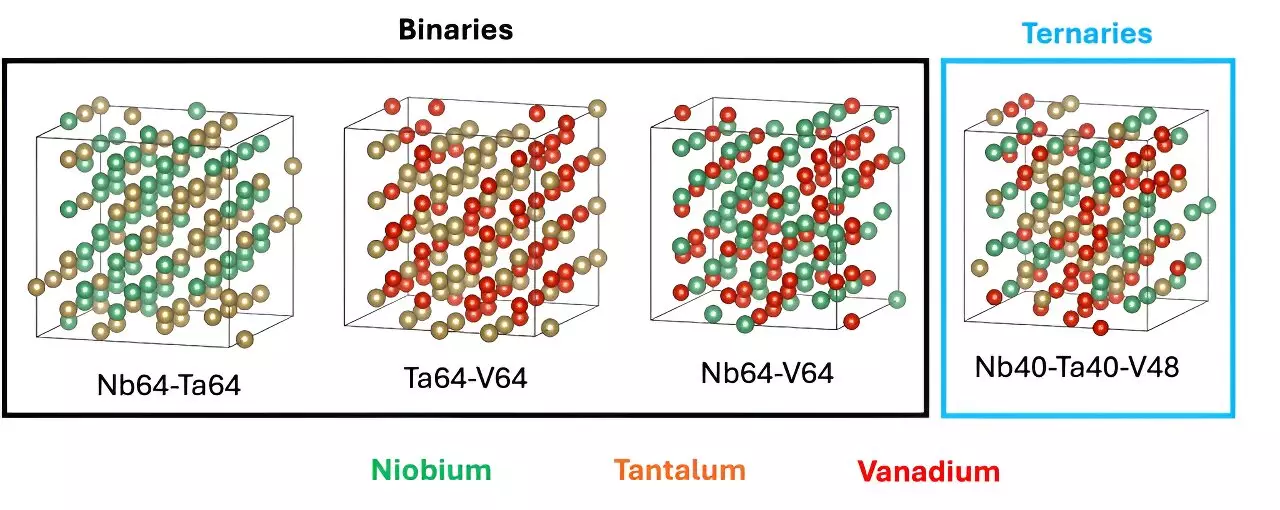Artificial Intelligence (AI) has the potential to transform various fields, and recent advancements at the Oak Ridge National Laboratory (ORNL) highlight this paradigm shift within the realm of nuclear fusion. Researchers have harnessed AI to streamline the identification of novel alloys that can be utilized as shielding materials for components in nuclear fusion reactors. The culmination of several years of research, this initiative is anticipated to accelerate the development of fusion technologies and possibly play a pivotal role in the future of sustainable energy solutions.
The quest for advanced materials that can withstand the extreme conditions within a fusion reactor has always posed a significant challenge. Traditionally, tungsten-based alloys were the standard choice due to their high-temperature resilience. However, these materials exhibited limitations in providing consistent shielding, a critical factor in ensuring the safety and efficiency of fusion reactors. Under the stewardship of former AI Initiative Director David Womble, the project gained momentum, leading to the efforts of ORNL AI data scientist Massimiliano Lupo Pasini, who advocated for the continuation of research within the Artificial Intelligence for Scientific Discovery (AISD) framework.
The endeavor has recently been reported in the journal Scientific Data, underscoring its scientific validity and potential impact on the field. Lupo Pasini articulated the necessity for alloys that not only resist high temperatures but also maintain structural integrity under demanding operational conditions. This gap in current material performance significantly necessitated innovative approaches to alloy development.
The integration of AI into materials science is a game-changer. The researchers have recognized that exploring the myriad possible metallic combinations for new alloy formulations through traditional methods involves extensive trial and error. By employing AI algorithms, they significantly reduce time and resources, allowing for a more systematic approach to identifying viable alloy candidates. Through this advanced analytical framework, the research team—comprising experts from various ORNL directorates—delivered promising findings by outlining three elemental combinations for further testing.
These machine-learning techniques represent the cutting-edge intersection of data science and materials engineering, showcasing AI’s transformative capacity to expedite resource-intensive materials discovery processes.
Despite the promising results, the research team acknowledges that their AI-generated database is only the preliminary step in a more extensive journey toward creating high-performance refractory high entropy alloys. Lupo Pasini notes the importance of incorporating six different elements into the alloy design; however, the quantum mechanical calculations necessary for advancing this research are both intricate and computationally expensive. The effort to gather meaningful data required considerable processing time using some of the most advanced supercomputers available—the Perlmutter and Summit systems.
These supercomputers, located at Lawrence Berkeley National Laboratory and the Oak Ridge Leadership Computing Facility respectively, were essential in performing calculations that took over a year to complete. This highlights not only the challenges associated with data generation but also the immense cloud of computational power and time-efficient methodologies in the evolution of nuclear materials research.
As the project advances, the next crucial phase will involve leveraging the generated data to train a sophisticated AI model capable of predicting the results of different elemental combinations. The goal is to assist materials scientists in optimizing the percentage ratios of alloy components to develop materials with disruptive potential in nuclear fusion technology. A successful outcome could significantly enhance material performance in fusion reactors, paving the way for reliable, clean, and safe energy production for the future.
The research conducted at ORNL represents a significant stride toward revolutionizing the understanding and application of materials in nuclear fusion. By integrating artificial intelligence into the alloy discovery process, scientists are positioning themselves to tackle the challenges of fusion technology and, ultimately, expand the horizons of sustainable energy solutions. The collaboration between data scientists and material scientists exemplifies how interdisciplinary approaches maximize potential advancements, promising a new era of innovation that could reshape our energy landscape.

